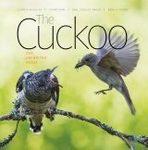![Exploring Britain's Hidden World Exploring Britain's Hidden World]()
Click to have a closer look
About this book
Contents
Customer reviews
Biography
Related titles
About this book
Britain's shallow seas are a mysterious domain. They remain largely unseen and unexplored except by marine scientists and divers, who have been documenting their wondrous discoveries over many years. Now, a wealth of information about what lives on and in the seabed has been brought together in one sumptuously illustrated volume. Keith Hiscock describes the incredible variety of marine life that exists around Great Britain, providing a foundation of knowledge for those interested in the natural history of the shallow seabed. He explains how findings are gathered and organised, as well as showing what is out there and how it works.
Fascinating, beautiful and often fragile, the habitats and marine life described are essential to the health and productivity of our oceans. Without an adequate, shared understanding of what and where they are, how can we identify and protect them? Exploring Britian's Hidden World is the culmination of 50 years of research by the author to better understand where different subtidal seabed habitats occur and how their associated marine life has come to exist. That quest draws on a rich vein of knowledge obtained by many naturalists, scientists and divers who, for almost 200 years, have described seabed communities and sought to understand their structure and function.
Using a minimum of technical terminology, Keith Hiscock combines his interests in marine biology, diving and photography to inform, inspire, and leave a vivid and lasting impression of the marine habitats and species around Britain. He hopes this book will provide new insights, much pleasure, and perhaps some surprises too.
Contents
Foreword 5
Preface 7
Using this book 7
Exploration and discovery: the first 150 years 9
Early days 9
Systematic studies - remote sampling 13
Diving and video surveys 17
Gathering knowledge and creating information - the past 50 years or so 21
Remote sampling and observation 21
Scuba diving takes-off 28
How we made sense of it all (biotopes) 36
Shaping the seabed environment 40
Britain's place in the world 40
Ocean currents 42
Wave action 42
Tidal currents 48
Wave action and tidal currents together 50
Light and depth 52
Salt and fresh 55
Weather events 55
Modifying factors 57
Physical and biological factors: bringing it all together 57
Habitats 60
Sediments 60
Open coast and rocky areas 78
Wrecks and other artificial substrata 114
Sea lochs 134
Rias and voes 152
Tidal sounds and other extremely tide-swept habitats 162
Estuaries 170
Saline lagoons 180
Species as habitats 185
Change 205
Seasons in the sea 208
Human activities 220
Decadal scale change 221
Non-native species 226
Concluding remarks 228
Protecting what we have 230
Threats and sensitivities 231
Protection 234
Marine protected areas - what they will and will not do 237
Restoration? 240
Research 240
The dilemma of non-native species 241
What you can do 242
The future is here 243
Finding information 243
Making seabed biology information 'useful' 245
Visualisation 246
Collecting information 248
Glossary 250
Acknowledgements 256
Index 257
The author 263
The sponsors 264
Customer Reviews
Biography
Keith Hiscock is an ecologist who has been studying marine habitats and species for more than fifty years. A fortuitous combination of interests in marine biology, diving and photography and a great deal of good luck being in the right place at the right time has provided him with the opportunity to become a leading marine ecologist and conservation scientist in Britain. His early interest in seashore life and especially cold-water corals progressed through a degree in Zoology with Botany and then a PhD studying The Influence of Water Movement on the Ecology of Sublittoral Rocky Areas. After a short period monitoring rocky shores around Anglesey, he was appointed as Deputy Director of the Field Studies Council Oil Pollution Research Unit at Orielton Field Centre in Pembrokeshire in 1975. From there, he, with many others, developed the methods and equipment that would be used to describe, catalogue and classify seabed habitats and their associated communities (now known as 'biotopes') around Britain through a series of studies commissioned by the then Nature Conservancy Council (NCC). When the NCC determined that a Marine Nature Conservation Review of Great Britain (MNCR) was needed, he was appointed to head that team in 1987. In 1998, the Review was 'finished', although far from complete. By now employed by English Nature, he had seen the need to bring together marine biological information and make it more useful for environmental protection and management, including through a new medium called 'The Internet'. That vision was achieved with the Marine Biological Association (MBA) and is the Marine Life information Network (MarLIN) and its 'spin-outs': the Data Archive for Marine Species and Habitats and much of the education programme at the MBA. Having retired in 2007, he has continued to contribute to work at the MBA and is an Associate Fellow there as well as pursuing those passions for marine biology, diving and photography in his own time.









































